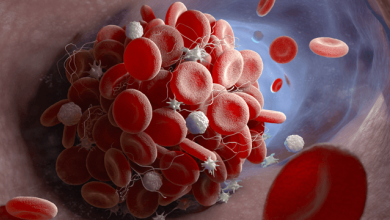Search results
DAPT in Complex PCI
Author(s):
Dimitrios Alexopoulos
,
Charalampos Varlamos
,
Despoina-Rafailia Benetou
Added:
3 years ago
Article
Dual Anti-platelet Therapy after Coronary Stenting: Rationale for Personalized Duration of Therapy
Author(s):
Donald E Cutlip
Added:
3 years ago
Article
Author(s):
Giora Weisz
Added:
3 years ago
Much has been written, but little is known, about the long-term outcomes after drug-eluting stent (DES). The introduction of DES has extended the use of stents from a passive platform for vessel wall scaffolding to an active biotechnology vehicle for local delivery of antiproliferative pharmacotherapy. Like any other therapy or medical technology, no treatment is perfect and free of potential…
View more
Author(s):
Rik Rozemeijer
,
Wijnand P van Bezouwen
,
Michiel Voskuil
,
et al
Added:
3 years ago
Dual antiplatelet therapy (DAPT) consisting of aspirin and a P2Y12 inhibitor is prescribed in the treatment of acute coronary syndrome (ACS) or following percutaneous coronary intervention (PCI) for drug-eluting stent (DES) implantation. An important misconception remains that DAPT should be prescribed to prevent stent thrombosis. Although this may seem obvious, it should be emphasized that the…
View more
Author(s):
Colin T Phillips
,
Michael C Gavin
Added:
3 years ago
Acute coronary syndrome (ACS) occurs most often when a vulnerable intracoronary plaque ruptures or erodes to expose a prothrombotic core, precipitating thrombus formation by way of platelet activation,1–3 The spectrum of ACS includes non-ST segment-elevation (NSTE) ACS, where a vulnerable plaque threatens downstream coronary perfusion manifest as an increase in symptom frequency and/or duration …
View more
Author(s):
Athanasios Moulias
,
Angeliki Papageorgiou
,
Dimitrios Alexopoulos
Added:
2 years ago
Author(s):
Mirvat Alasnag
,
Waqar Ahmed
,
Ibrahim Al-Nasser
,
et al
Added:
2 years ago
Author(s):
Despoina-Rafailia Benetou
,
Charalampos Varlamos
,
Christos Pappas
,
et al
Added:
2 years ago
Author(s):
Michela Faggioni
,
Michael C Gibson
,
Roxana Mehran
Added:
3 years ago
The use of non-vitamin K antagonist oral anticoagulants (NVKA) has revolutionized the antithrombotic treatment of patients with atrial fibrillation (AF), finally freeing them of the inconvenience and expense of international normalized ratio measurements. However, add to the equation the presence of coronary artery disease requiring percutaneous coronary intervention (PCI) with stent placement…
View more
Author(s):
Despoina-Rafailia Benetou
,
Panayotis K Vlachakis
,
Charalampos Varlamos
,
et al
Added:
2 years ago
















